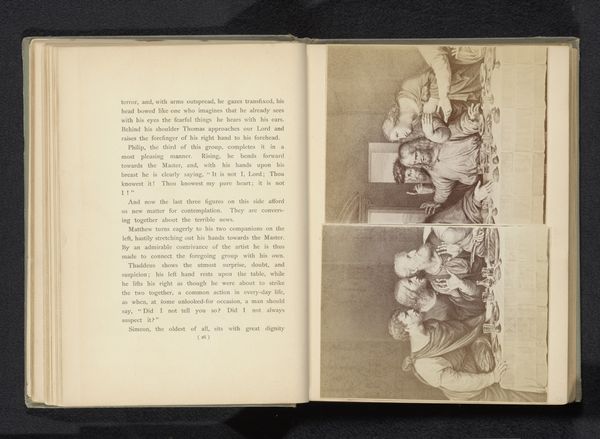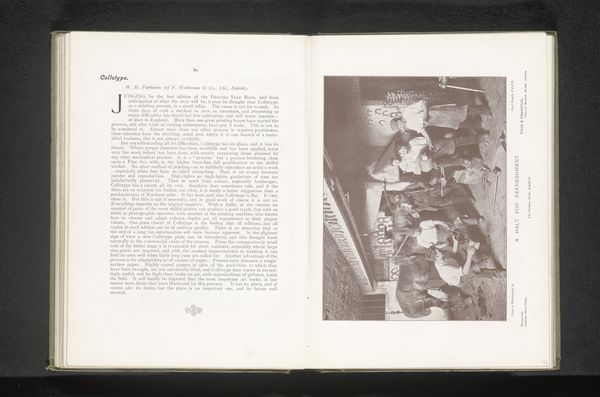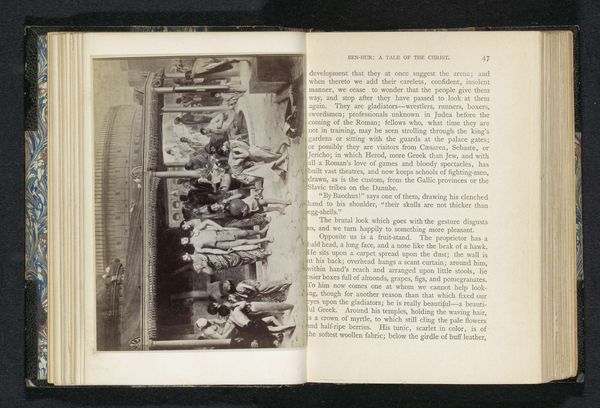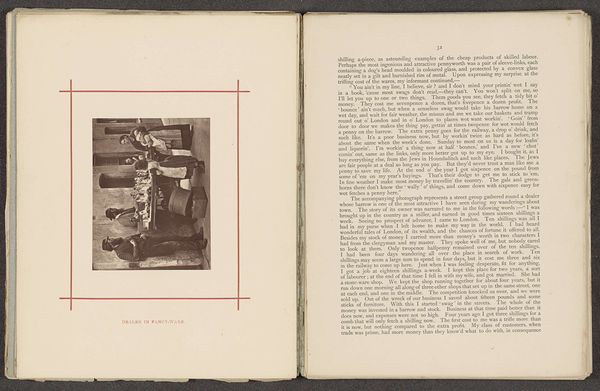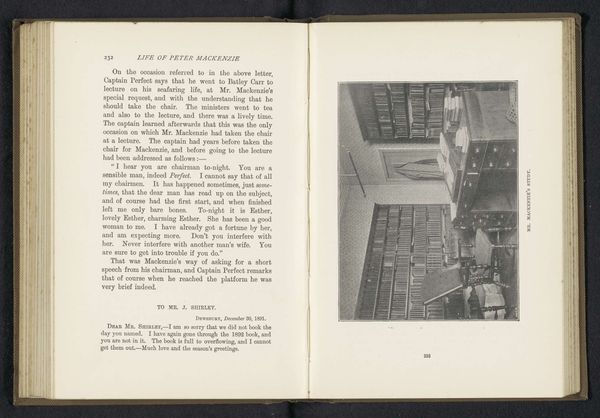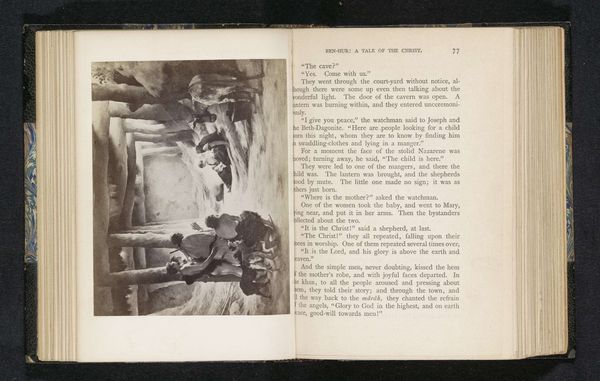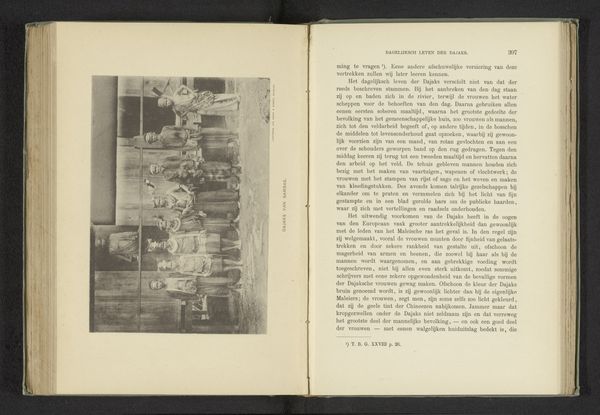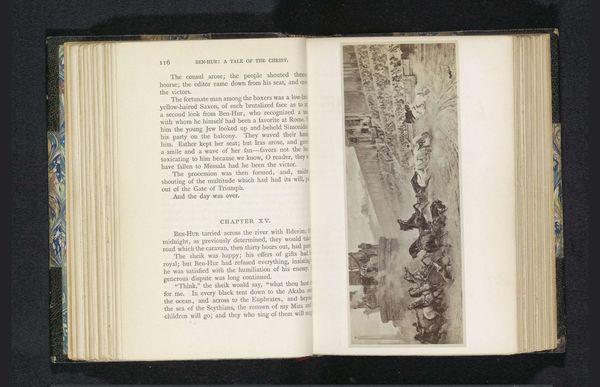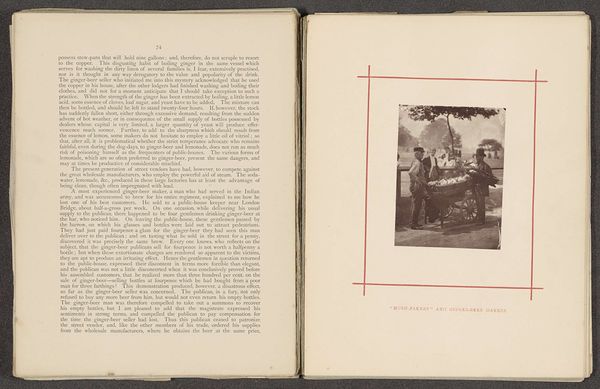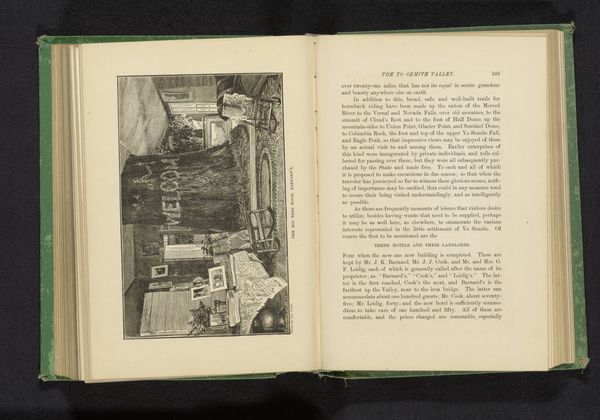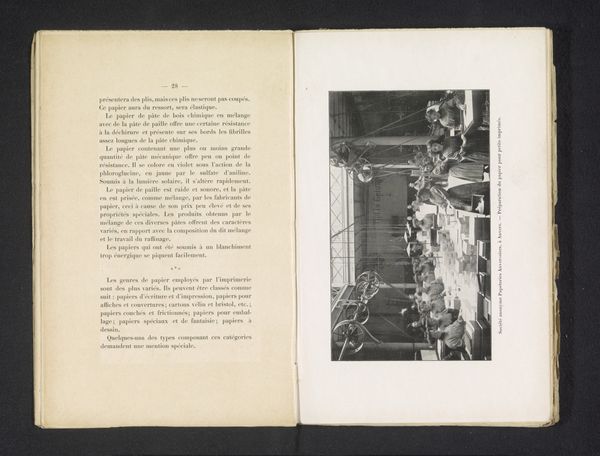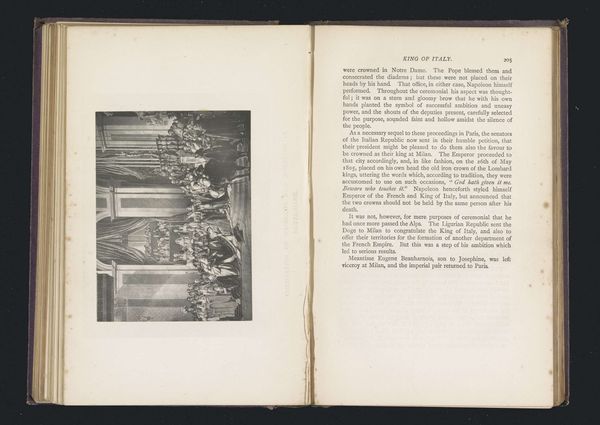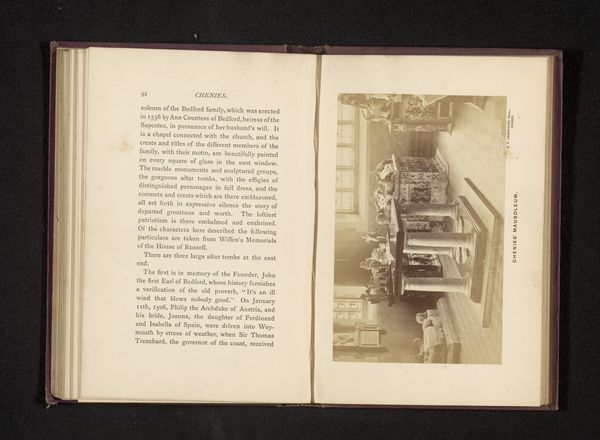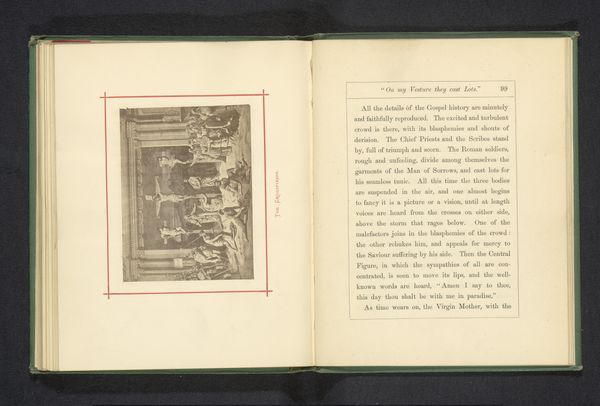
Fotoreproductie van een schilderij, voorstellende Christus voor Pontius Pilatus before 1888
0:00
0:00
print, paper, photography, engraving
#
portrait
#
narrative-art
# print
#
figuration
#
paper
#
photography
#
history-painting
#
academic-art
#
engraving
#
realism
Dimensions: height 96 mm, width 137 mm
Copyright: Rijks Museum: Open Domain
Curator: This image presents a photo reproduction of an older painting, "Christ Before Pontius Pilate." It comes to us from before 1888. I'm struck by its almost documentary nature within the context of a book, preserved in the Rijksmuseum's collection. Editor: The immediate impression is quite dark and claustrophobic. Even within this small scale, the crowd seems to press in from all sides. You can almost feel the palpable tension. Curator: Indeed. As a photograph of a painting, it highlights an interesting intersection of production: the original painter’s intention, translated through the lens of the photographer, and reproduced for mass consumption within the bound pages of this volume. We're considering how different technologies shape the message. Note the way the figures are arranged; a careful academic staging typical of history paintings, with Christ and Pilate at the focal point. Editor: It's that act of mechanical reproduction itself I find interesting. The image is rendered into ink on paper, a process reliant on labor—from the camera operator to the press workers. It makes me wonder who the intended audience was and how the subject matter functioned as moral instruction. Curator: Undoubtedly, its reproduction democratizes the image, making it accessible beyond the walls of a church or wealthy patron’s collection. Observe the way light and shadow are employed to heighten the drama. The composition directs our eyes toward Christ, despite the throng of bodies. Semiotics also tell us much; for example, the accoutrements denote the power imbalance through dress and stature, indicating power. Editor: The question of craftsmanship becomes paramount here. Who made the original painting and how does the choice of reproductive methods influence its perception? Consider the socio-economic implications, the access and impact the print allowed for wider audiences during a time when color printing was rare. Curator: You're making me consider how the act of reproducing impacts the authenticity of the artwork itself, almost diluting the unique quality. Though the photo adds an intriguing layer of its own temporality to its form and creation. Editor: Exactly. I appreciate how this particular image complicates traditional ideas of fine art through its mass production and challenges that hierarchy. Curator: A complex work indeed; each approach helps to illuminate further aspects to be considered when observing "Christ Before Pontius Pilate". Editor: I leave with a greater insight into the democratization of images and its reliance on materials.
Comments
No comments
Be the first to comment and join the conversation on the ultimate creative platform.
